Many of us have had the experience of an unexpected stop along the road where four-way flashers would be helpful. This was apparently not a consideration when our cars were built, so we are left on our own to add this feature. The fix is to add a second turn signal flasher which is wired through a relay to the turn signal wires.
Modern cars don’t run their four-ways through the ignition switch, so they work with the key out. I used a switched power source to avoid accidentally leaving them on and running the battery down. That’s your choice, but make sure you use the correct wire colors whichever way you get power to the circuit. (N – battery, W- switched battery, G- fused and switched battery, etc.)
I used a toggle switch with an LED in the paddle for visual notice that the flashers are operating. The circuit is a little different for positive vs negative ground and an LED flasher will be needed if you have LEDs in your turn signals.
Flashers are available in two prong or three prong. The third prong is for the dashboard indicator lamp for the turn signals. If you want a separate lamp, you can use this. I used a two-prong flasher with the indicator in the switch. Regardless which circuit you use, make sure you have a good ground connection.
The first two circuits use a simple toggle switch. The second two use the lighted switch referenced above.
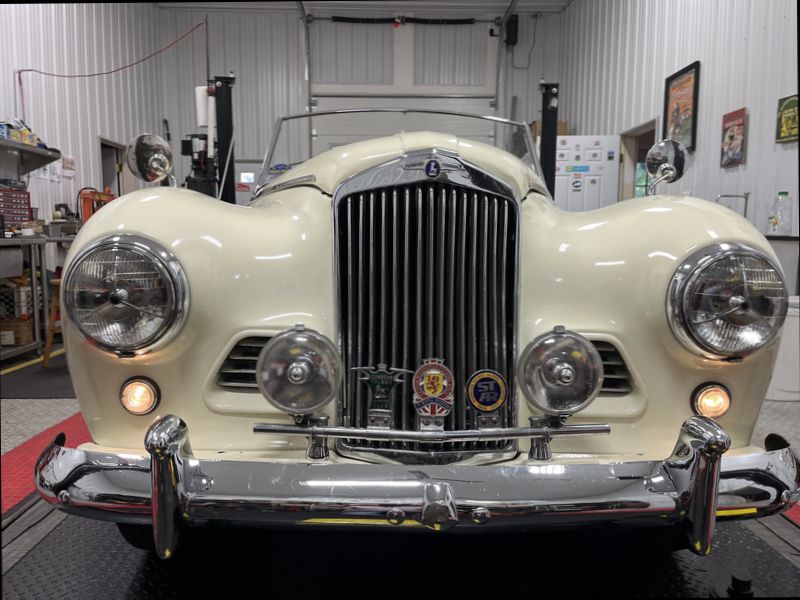

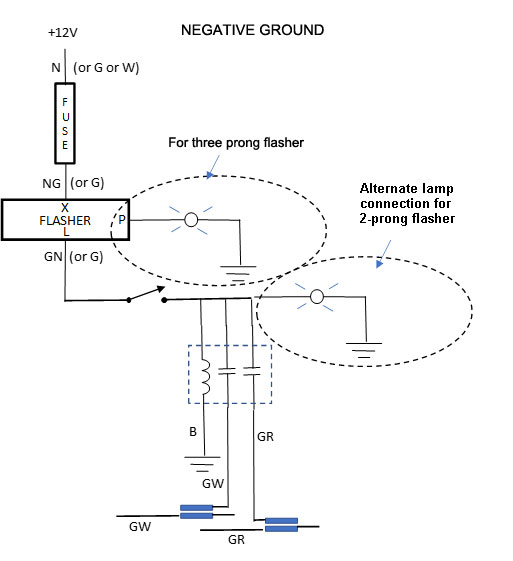
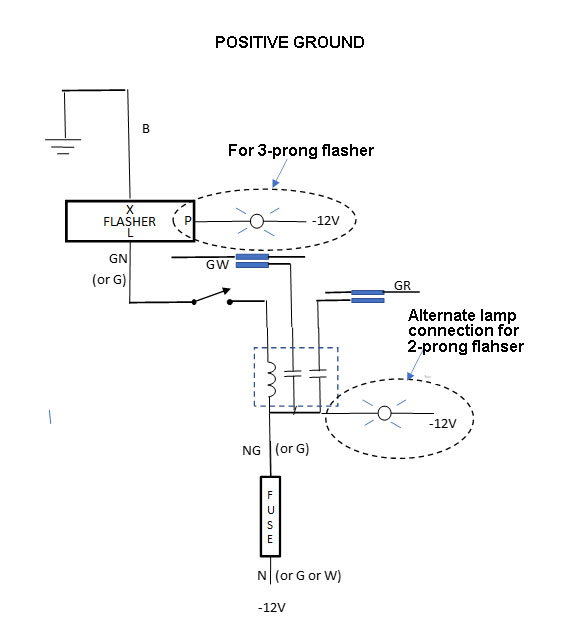
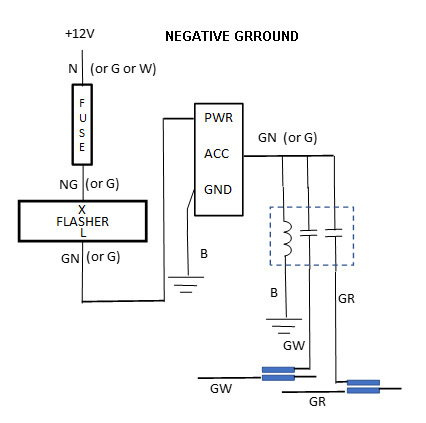
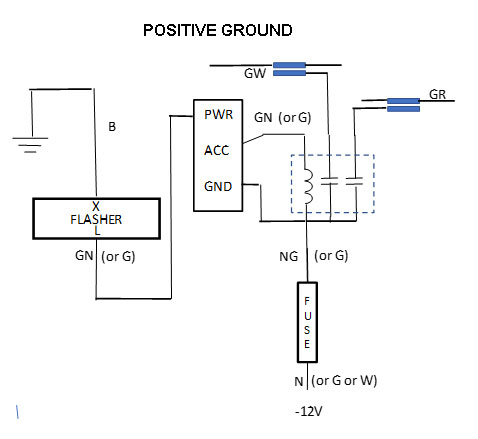
*The wire colors are the same on the Talbot 90 and Talbot-Alpines, but the wires are not as conveniently located. They exit the end of the steering column and terminate in a junction box next to the horns. Some of the colors I used between the components may not be correct and differ significantly from the list of “COMMONLY USED COLOUR CODES FOR BRITISH CAR WIRING” on Auto Electric Supplies Ltd website. (But they work for me.)
